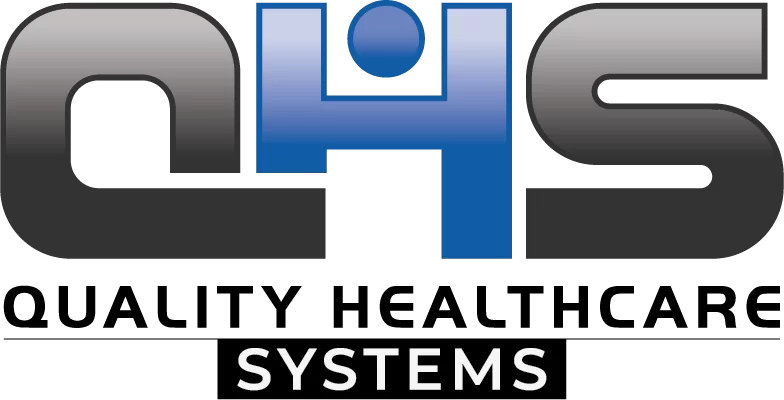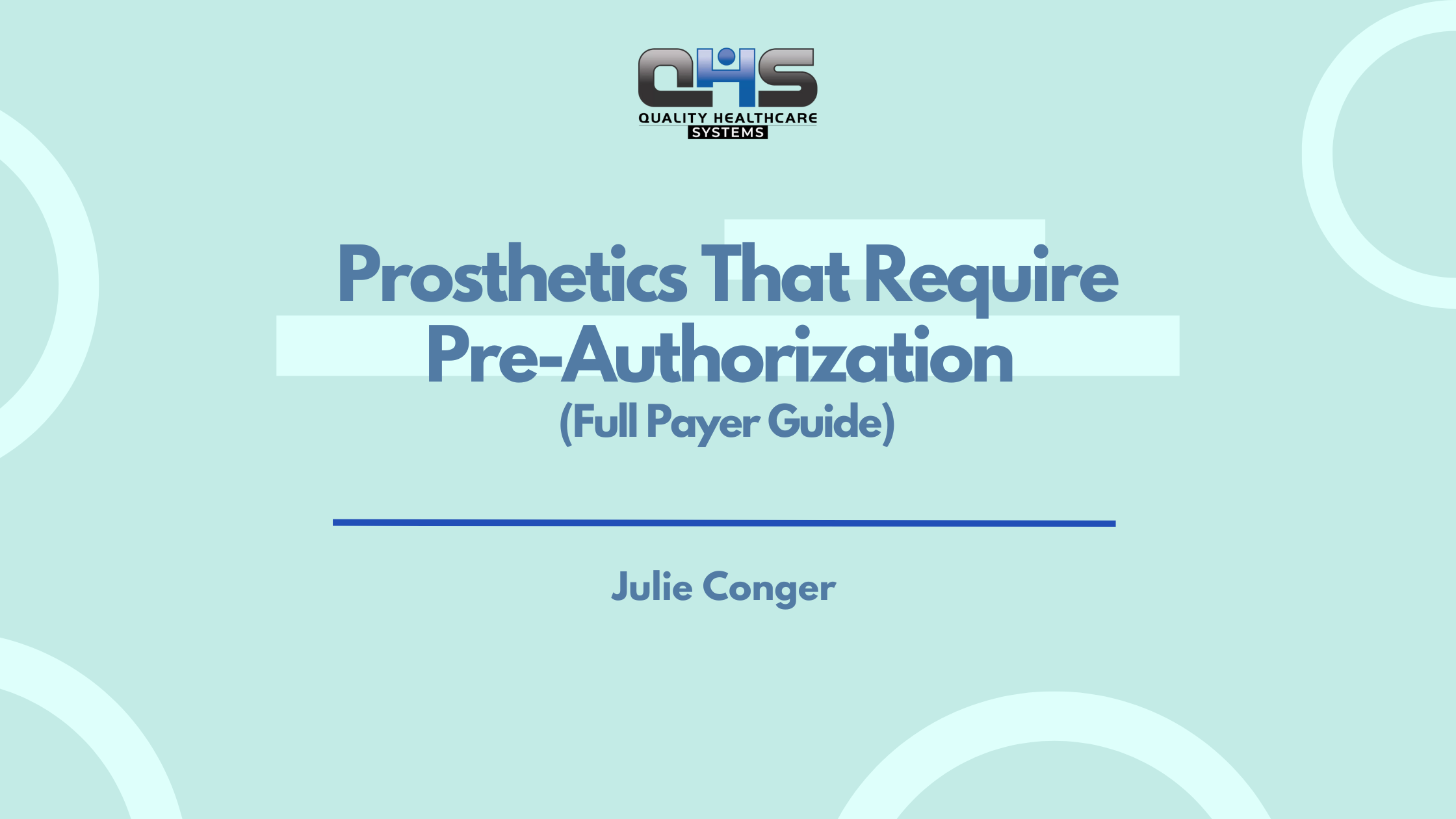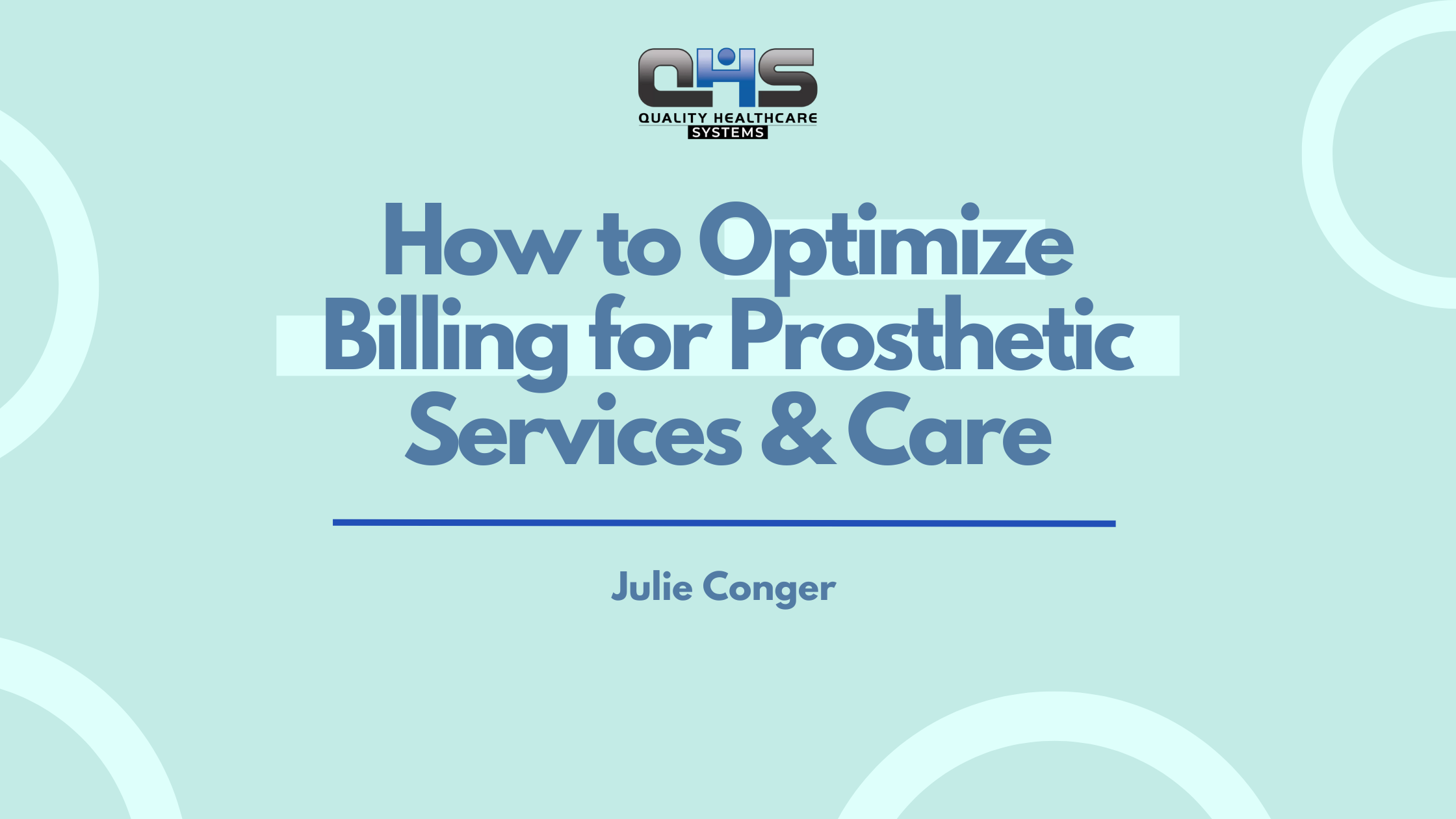Pre-authorization, also referred to as pre-approval, is a critical step in the prosthetic billing and delivery process. Insurers require this step to validate medical necessity and ensure the device aligns with their reimbursement policies. For providers, understanding which prosthetics require pre-authorization—and under what conditions—is essential to avoid claim denials, reduce delays in patient care, and maintain regulatory compliance.
This guide explores the types of prosthetics commonly subject to pre-authorization, outlines the payer-specific rules, and offers practical steps for navigating this complex landscape.
Which Prosthetics Require Pre-Authorization?
Prosthetic devices that typically require pre-authorization or pre-approval include:
-
Microprocessor-controlled knees (MPKs) – e.g., Ottobock C-Leg, Genium, or Ossur Rheo Knee
-
Powered prosthetic feet or ankles – e.g., BiOM or Empower foot
-
Myoelectric upper limb prostheses – e.g., bebionic hand, i-Limb, Michelangelo hand
-
Custom socket systems – especially when paired with high-tech suspension systems
-
Prosthetic liners and sleeves with advanced materials or vacuum features
-
Multi-axial or hydraulic feet – depending on payer guidelines
-
Any high-cost or technologically advanced components not considered “standard” by the insurer
Always check the specific payer’s guidelines (e.g., Medicare, Medicaid, or private insurers) and submit necessary documentation like a Letter of Medical Necessity (LMN), physician’s prescription, and patient functional level (K-level) to support authorization.
Understanding Pre-Authorization in Prosthetics
In the context of prosthetic devices, pre-authorization is a process through which insurance companies evaluate whether a particular item is medically necessary before agreeing to reimburse the cost. Unlike standard durable medical equipment, prosthetics often require substantial documentation, such as:
- Physician prescriptions
- Clinical notes
- Functional assessments
- Justification for custom fabrication
For example, a basic below-the-knee prosthetic might be approved quickly, while a microprocessor-controlled knee (MPK) prosthesis will likely require extensive documentation and pre-approval before fabrication can begin.
Key Steps in Pre-Authorization:
| Step | Description |
|---|---|
| Prescription | Provided by physician with clear diagnosis and recommendation |
| Clinical Documentation | Includes functional level, patient history, comorbidities, residual limb info |
| Prosthetist Evaluation | Notes detailing assessment and justification for selected prosthetic |
| Submission to Payer | All documents compiled and sent through insurer’s portal or platform |
| Approval or Denial Decision | Insurer reviews the documentation and either approves or denies the request |
High-Cost or Advanced Prosthetics Often Requiring Pre-Authorization
Prosthetic devices involving advanced technology or high reimbursement thresholds are the most common candidates for pre-authorization. These include:
- Myoelectric upper limb prosthetics
- Microprocessor knees (e.g., C-Leg, Rheo Knee)
- Powered ankles (e.g., BiOM)
- Energy-storing feet
Medicare uses the K-Level functional classification system, and a patient must be rated at K3 or K4 to qualify for devices like MPKs. Private insurers often evaluate clinical justification against published guidelines, focusing on whether the device improves functionality and quality of life compared to conventional options.
Custom-Made vs. Off-the-Shelf Prosthetics
Custom-fabricated prosthetics typically require pre-authorization due to their complexity and individualized nature. These devices involve:
- Tailored sockets
- Specific liners and suspension systems
- Custom-modular componentry
Off-the-shelf prosthetics—such as interim or preparatory limbs—may not always need pre-authorization, especially if priced below thresholds or used temporarily. However, documentation is still crucial for claims support.
| Type of Prosthetic | Pre-Authorization Likely? | Reasoning |
| Custom Socket System | Yes | Individually fabricated for patient anatomy |
| Temporary Limb | Maybe | May fall under pricing exceptions |
| Powered Knee Joint | Yes | High-tech device with functional level requirement |
| Adjustable Socket Kit | Depends on insurer | Classification may vary (custom vs. prefabricated) |
Payer-Specific Pre-Authorization Rules: Medicare, Medicaid, and Private Insurers
Each payer enforces different policies:
Medicare:
Medicare implemented prior authorization requirements in 2020 for selected L-codes under DMEPOS. Providers must now:
- Submit documentation via Medicare DME MAC portals
- Wait for approval before delivering the device
Medicaid:
Varies by state. Some states require prior authorization for nearly all prosthetics, including:
- Pediatric limbs
- Basic lower-extremity prostheses
Providers must consult their state’s Medicaid policy manuals or bulletins for current criteria.
Private Insurers:
Each insurer has a unique list of L-codes that require prior authorization. Examples include:
- UnitedHealthcare
- Aetna
- Blue Cross Blue Shield
These may outsource review to firms like AIM Specialty Health or eviCore, requiring providers to follow their portals and processes.
Documentation and Medical Necessity Requirements
Authorization requests must meet a documentation standard that includes:
- A physician’s prescription with detailed diagnosis
- Medical records supporting functional goals and condition
- K-Level classification or functional level assessment
- A Letter of Medical Necessity (LMN)
- Photos or diagrams of the residual limb
- HCPCS-coded billing justification
Common causes of denials include vague notes, inconsistent L-codes, or missing evaluations. For instance, billing L5856 without a K3 functional classification will almost certainly trigger denial.
Recommended Document Checklist:
| Required Item | Purpose |
| Physician Prescription | Establishes initial medical need |
| LMN | Justifies device selection with clinical reasoning |
| Functional Assessment | Validates K-Level or patient mobility level |
| Prosthetist’s Evaluation | Demonstrates fitting suitability |
| Supporting Clinical Records | Adds medical context for insurance reviewer |
| Photos or Limb Measurements | Evidence for customization |
How to Appeal a Denied Pre-Authorization for Prosthetics
If pre-authorization is denied, providers can appeal. Steps include:
- Review denial letter and identify specific issues
- Submit additional or corrected documentation addressing each point
- Include enhanced clinical notes, peer-reviewed studies, or physical therapy evaluations
For Medicare, the appeal structure includes:
- Redetermination (first level)
- Reconsideration
- ALJ hearing
- Medicare Appeals Council review
- Federal District Court (final level)
Most private payers offer two to three levels of appeal, with 30- to 120-day windows. A collaborative approach between physicians, prosthetists, and billing teams is key to success.
Final Thoughts: Staying Compliant and Proactive
Staying ahead of pre-authorization rules is essential in modern prosthetic practice. Providers should:
- Train staff on payer-specific documentation standards
- Create templates for common prosthetic authorizations
- Use digital tools to track submissions and appeal deadlines
- Engage patients early to gather complete clinical histories
Pre-authorization is more than a compliance hurdle—it’s a strategic component of care planning, billing efficiency, and reimbursement success. By aligning clinical operations with payer expectations, providers can ensure timely device delivery and better outcomes for patients.





